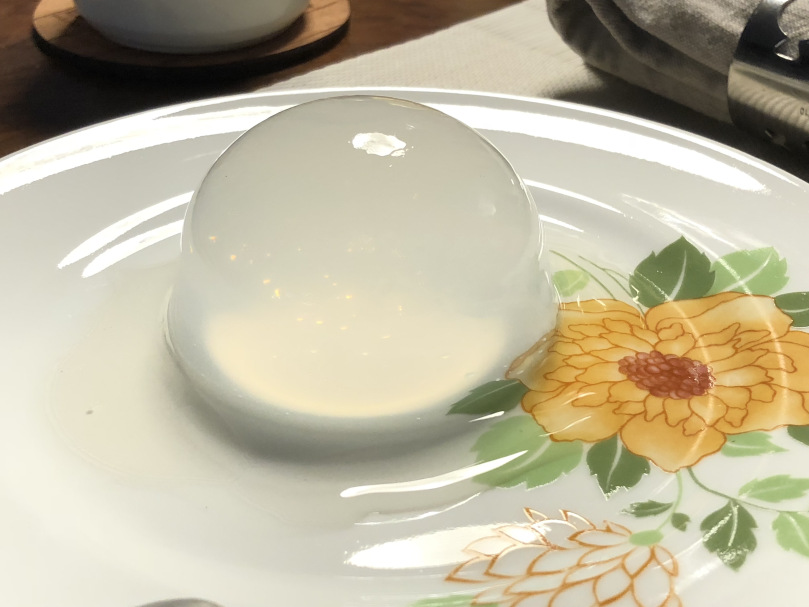I am a big fan of Cacio e Pepe pasta, and I spent quite some time perfecting my version of it. In the coming days, I’ll try this version, that’s just a bit different from mine and I’ll see if it’s really better.
Let’s see!
I am a big fan of Cacio e Pepe pasta, and I spent quite some time perfecting my version of it. In the coming days, I’ll try this version, that’s just a bit different from mine and I’ll see if it’s really better.
Let’s see!
I came across San Forgetica, a font that’s supposed to improve our memory when studying. It was developed by RMIT, and it’s free to download and use.
There is a Chrome extension too. It’s pretty cool!
This video from BMW explains the 5 levels of autonomous driving. Spoiler: we are already at level 2, on a few high-end car models.
Volvo just presented Vera, the future of autonomous transport. Designed to operate on short distance high-volume tasks, this system is fully autonomous and it does not even have a driving cabin.
But the best example comes from Dominos’s pizza. They are already testing autonomous deliveries, taking full advantage of this amazing technology.
I can’t wait to see what’s next for this exciting opportunity in the transport industry!
Super interesting video on physical access security.
Per un certo periodo non ero bravo a fare business. Era il periodo in cui spendevo soldi in abiti costosi, in biglietti da visita stravaganti, e perdevo tempo ad assecondare i miei clienti.
Sono stato un libero professionista per la maggior parte della mia carriera ed ho iniziato presto. Avevo solo 21 anni quando ho lasciato l’università e ho aperto la partita IVA. A quel tempo pensavo che il dovere di un professionista fosse trovare il maggior numero di clienti possibile e renderli felici.
Era praticamente impossibile perché la maggior parte dei miei clienti non era solo difficile da compiacere, ma la maggior parte delle volte non avevano nemmeno idea di cosa volessero loro stessi. Volevano risultati inarrivabili, in tempi irragionevoli, a prezzi insostenibili. Io ero giovane, senza esperienza e accettavo tutto quello che arrivava.
Mi ricordo bene quanto mi facesse arrabbiare non ricevere risposte alle mie offerte.
Successivamente ho imparato che il rapporto con i clienti era molto più simile ad una storia d’amore: entrambe le parti dovevano avere rispetto reciproco, essere attratte, e sentirsi bene insieme. Quando era una relazione non corrisposta, creava solo frustrazione, rendeva le persone infelici, e di solito durava poco.
Ad un certo punto ho accettato l’idea che un professionista non fosse definito dai clienti che aveva, ma dai clienti che aveva deciso di non avere. Allo stesso modo in cui la cultura di un ambiente lavorativo non è definita da come le persone la descrivono ma solo da quello che viene tollerato da chi la vive, un professionista è definito dal tipo di clienti che non cerca, che non vuole, e che non ha.
Per questo mi piace ripetere che i miei migliori clienti, sono quelli che non ho mai avuto.
There was a time I really sucked at business. It was the time when I spent money on suits, a fancy package of business cards, and definitely at pleasing all my clients.
I was freelance for the significant part of my career, and I started young. I was just 21 when I dropped off university and started my own business. At that time I thought that the duty of a professional was to get as many clients as possible and make them happy.
It was nearly impossible because most of my clients were not just hard to please, but most of the times they didn’t even know what they wanted. They were merely asking for unreasonable results, with unrealistic deadlines, at unsustainable prices. I was young, inexperienced, and I used to accept whatever was coming in.
I remember getting really upset every time I was sending out an offer, and I was not getting a timely reply, or I was turned down.
Later in life, I learned that client work is more like a love relationship: both parts need to respect each other, be attracted, and feel right about it. When it’s just a mono directional thing, it creates frustration, it makes people unhappy, and it generally doesn’t last long.
At some point, I accepted the idea that a professional is not defined by the clients they have, but by the clients, they decide not to have. As much as the culture of a workplace is not determined by what people say about it, but by what people tolerate to happen around them, a professional is defined by the type of clients they don’t seek, they don’t want, and they don’t have.
That’s why I like to say that the best clients I’ve ever had were the ones I never had.

Last night, after many failed attempts, I was able to make a Mizu Shingen Mochi also known as Japanese Raindrop Cake.
My greatest struggle was the correct ratio for the ingredients to obtain the perfect consistency. There are only three base ingredients, but they need to be perfectly balanced.
Ingredients:
This quantity fits two standard spherical molds.
Process:
Done!